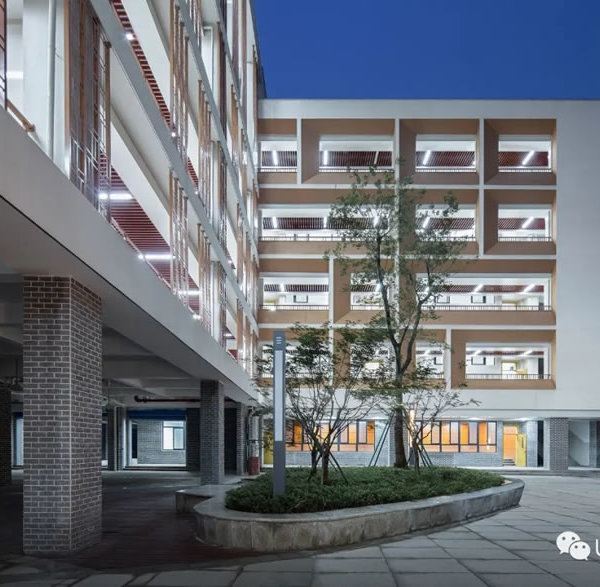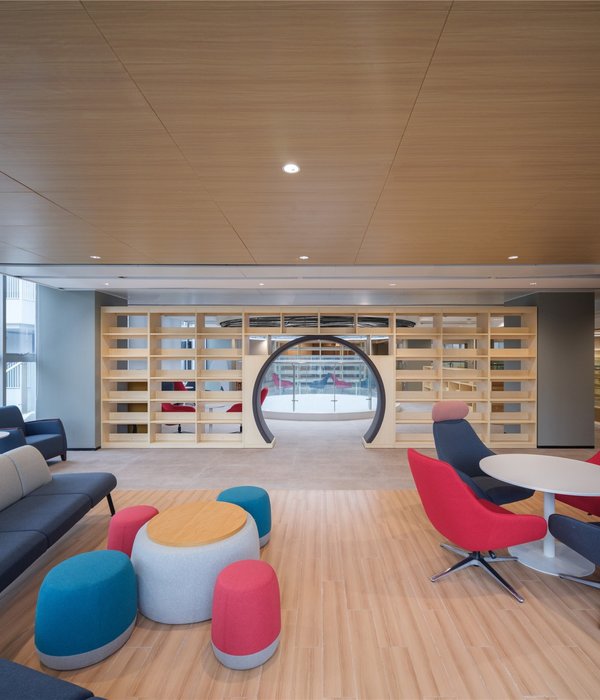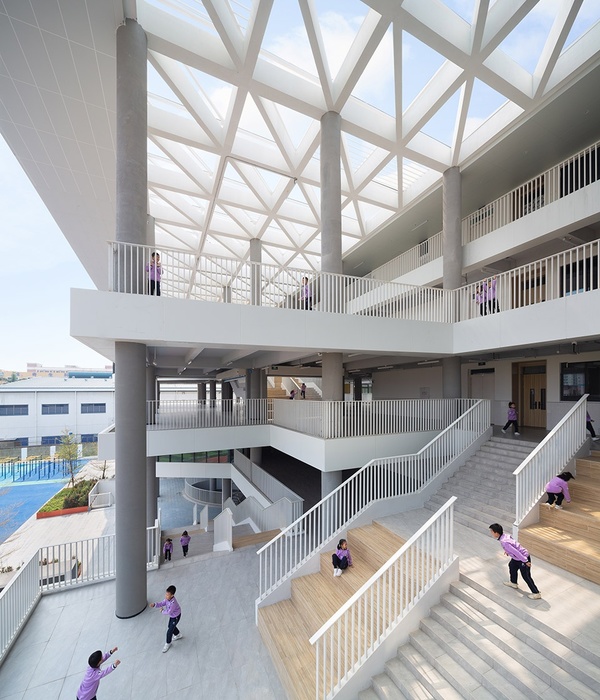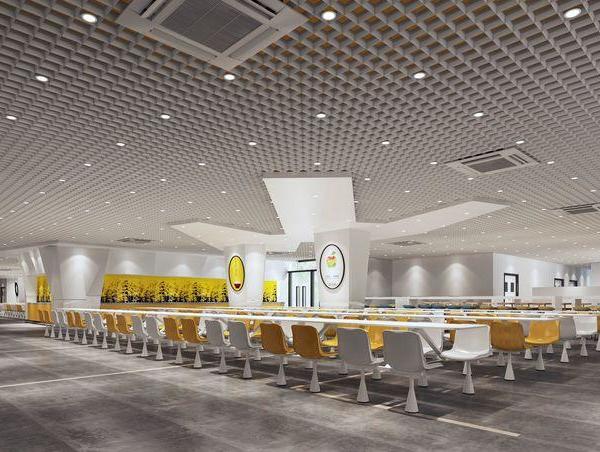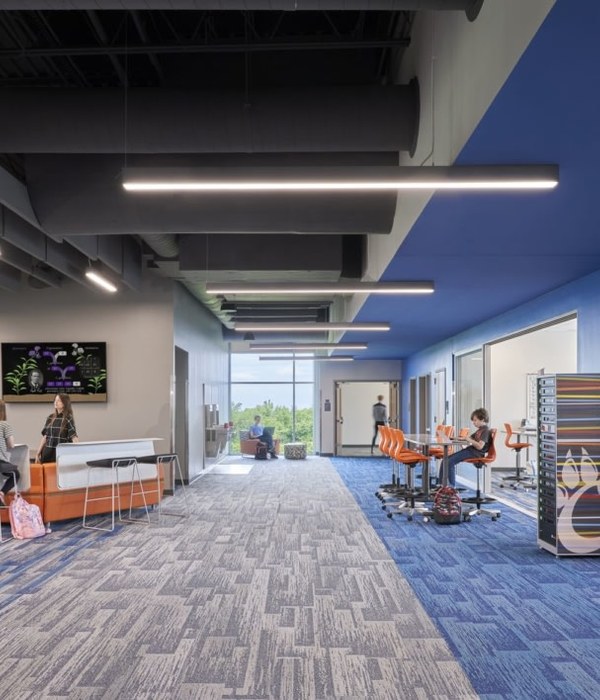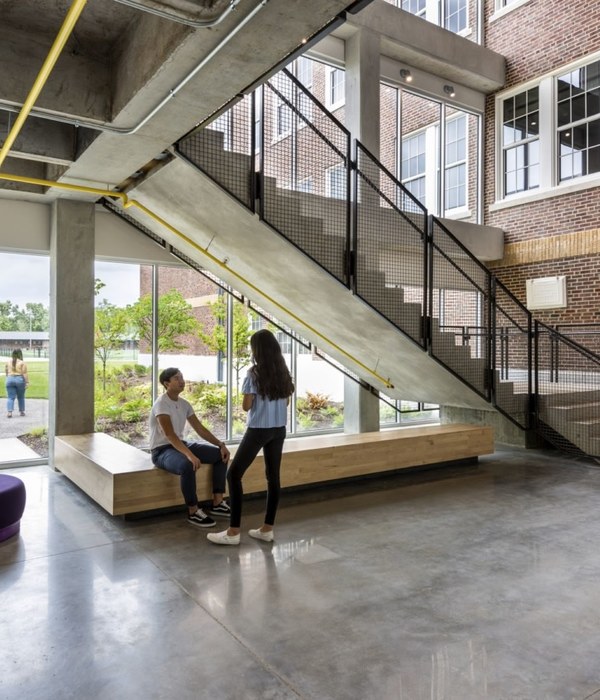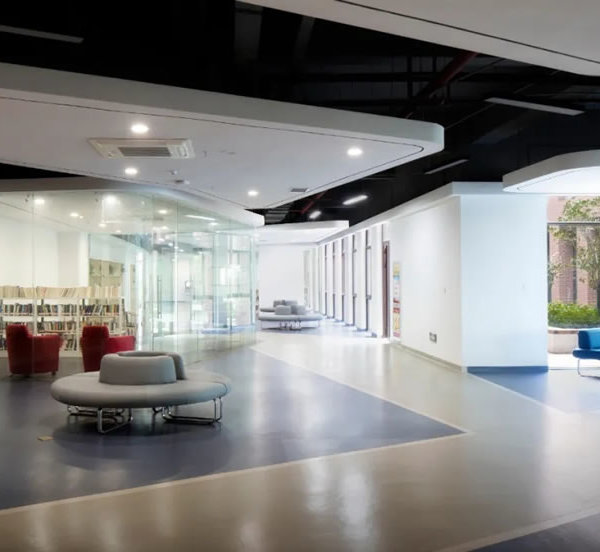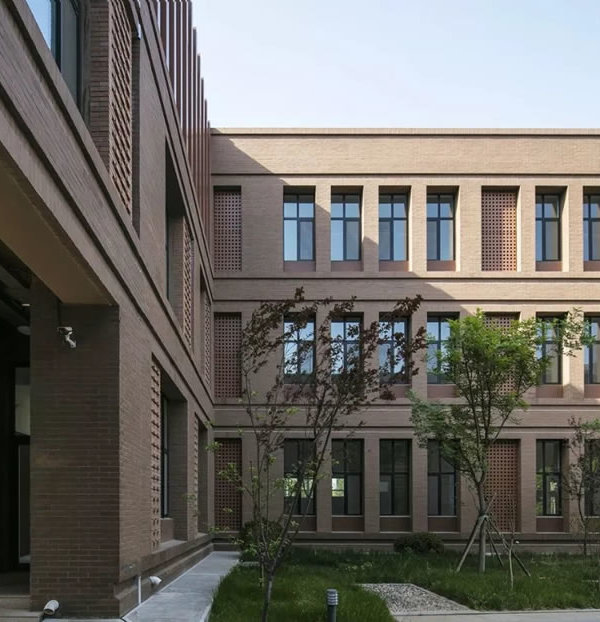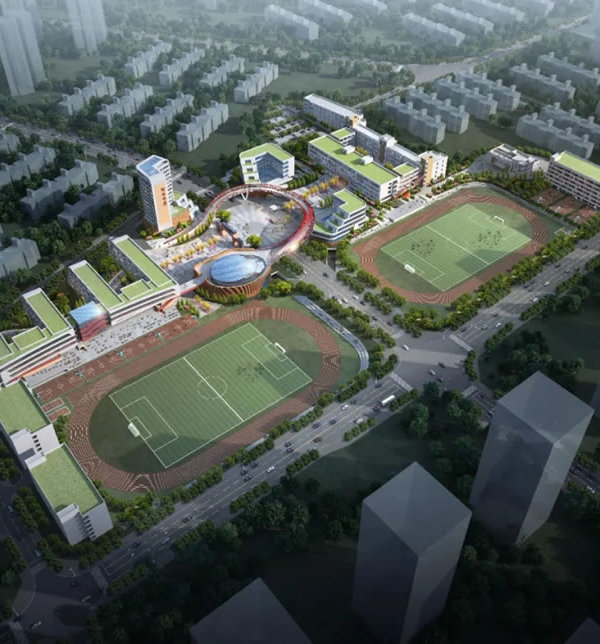Amenta Emma Architects designed the Pathways Academy of Technology & Design, a high school specific for students interested in technology, located in East Hartford, Connecticut.
High school or Silicon Valley think tank? The convergence of the two ideas was intentional in the design of this new magnet high school for students excited about technology. The Academy sits at the entrance of a college campus and is meant to help 400 highly motivated students transition to college, as well as develop relationships with world leading manufacturing entities located nearby.
The college wanted a highly visible, transparent building, fitting its unique campus character. The City wanted a stylized building to broadcast the highly technical nature of the school. Designers accomplished both objectives with an exterior that reflects a high tech palette and an interior that provides interactive learning environments anchored around a day lit atrium meant to spark creativity as students learn about robotics, nanotechnology, virtual reality, digital media and physics.
Students from the ACE Mentorship program were invited to the architect’s office, where it was easy to observe how they interacted and collaborated with each other. This experience helped shape the shared spaces for students throughout the building. Vibrant accent colors, natural light, sleek surfaces, angled walls and vistas in and through the building make it feel like a Silicon Valley work space, ideal for collaboration and flexibility. Technology Cafés (gathering spaces outside of classrooms with comfortable seating and connected technology) located on the upper floors of the atrium encourage on-the-spot collaboration among students.
Students’ physical projects are displayed in LED-light glass cases in high traffic common areas opposite the cafeteria and virtual work is featured on the second floor via a 20 foot long video wall as inspiration and a celebration of student achievement and creativity.
The MDF (Main Distribution Frame) Room, normally hidden away in a discrete location to hide the hub of switches and cables connecting the building to the outside world, is featured in the atrium and blinking lights, racks and cables, all bathed in cobalt blue LED lighting, are visible through a full-height glass wall and celebrated as the high-tech “heart” of the school.
The dynamically-veiled drum-shaped feature at the streetfront of the building is a high-tech version of a traditional media center reading room wired for a variety of arrangements for conducting internet research and staying connected to the world outside of campus. A stock ticker adorns the curving west wall.
The building, v-shaped and joined at the east end with a glazed “hinge” that contains the media center reading room, is steel-frame construction with metal stud backup. Exterior high-pressure rain-screen panels are composed of Kraft paper with phenolic resins, the same material used in making circuit boards. The design maximizes natural light and outdoor views with high performance insulated glazing and light shelves, cutting energy consumption and providing visual relief from computer screens. Solar louvers mitigate sun penetration.
Other sustainable features include: high-albedo roof material to reduce heat gain; high-performance wall/roof insulation (R-value 24/30); an array of high-efficiency MEP systems. The building meets USGBC’s LEED Silver Certification.
Architect: Amenta Emma Architects Site Planning & Landscape Architecture: Richter & Cegan FF&E: Mathieu Hopkins Interior Design, LLC Acoustic Engineer: Cavanaugh Tocci Associates, Inc. Structural Engineer: GM2 Associates MEP Engineer: vanZelm Engineers Food Service Engineer: McFarland Kistler Associates Geotech Engineer: Welti Associates, Inc. Photography: Robert Benson Photography
9 Images | expand images for additional detail
{{item.text_origin}}

